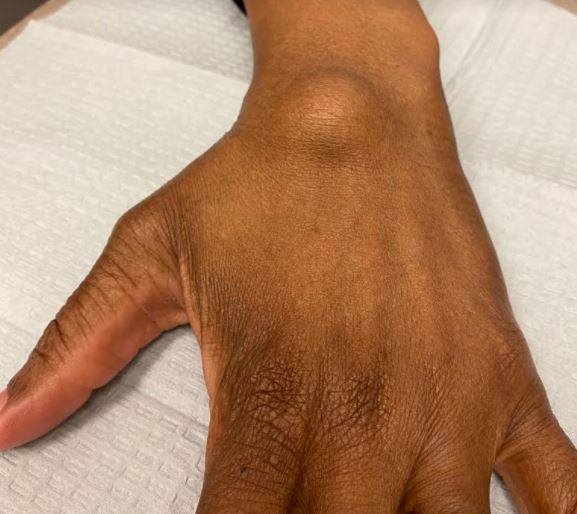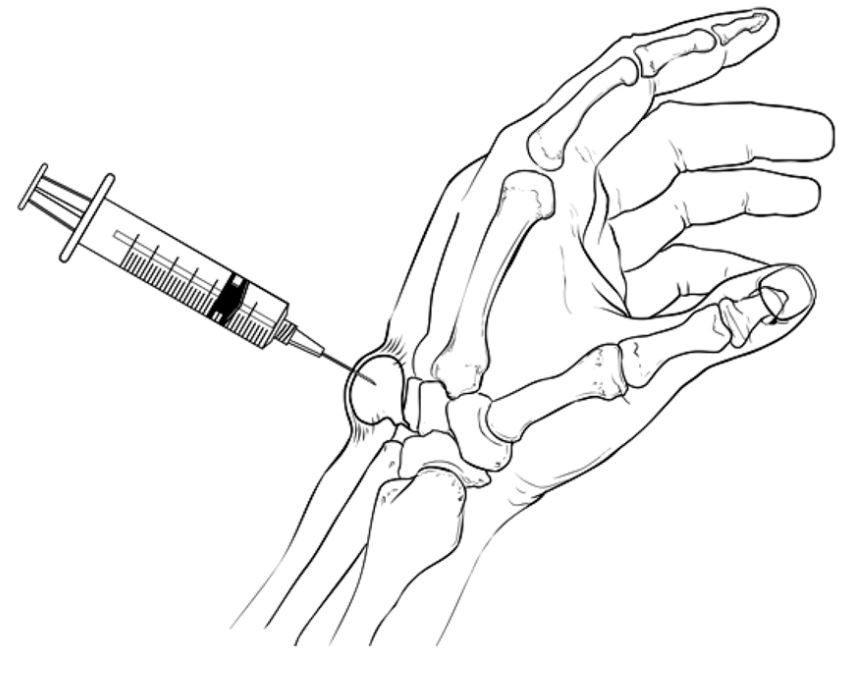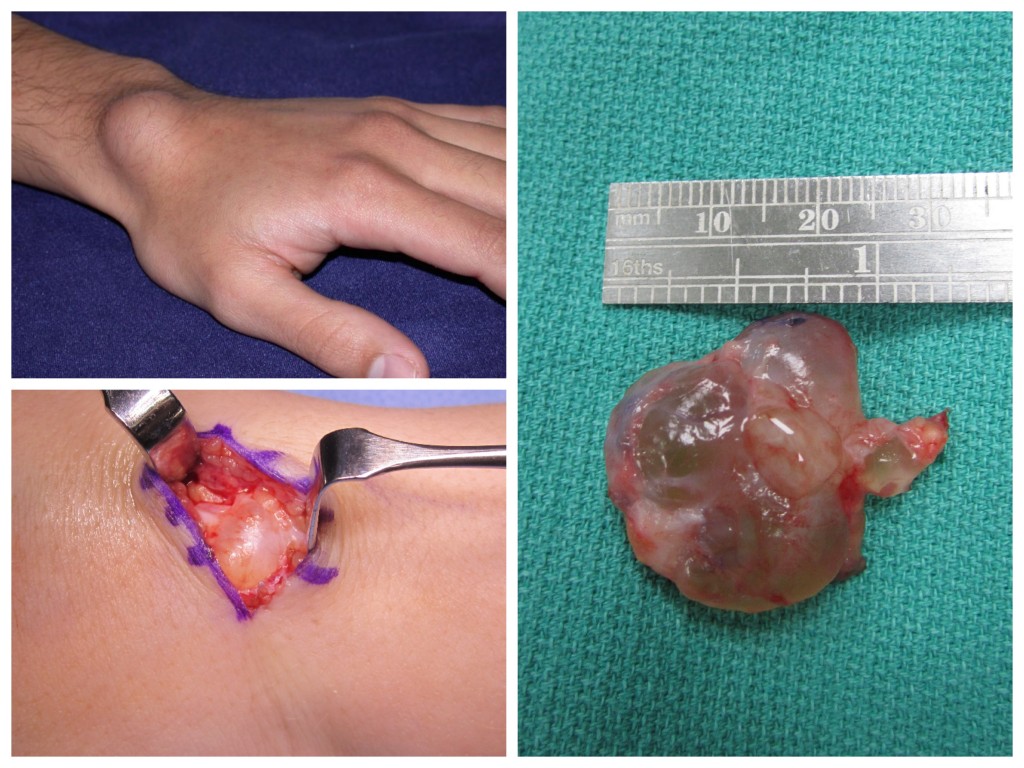What is a ganglion cyst?
A ganglion cyst is a very common type of lump or bump in the hand. These cysts are benign, not cancerous and are filled with thick jelly-like fluid. Ganglion cysts usually arise near a joint or tendon in the hand, wrist, or fingers – the most common location is in the wrist. They can occur in people of all ages and are common in young adults. The cause of a ganglion cyst is unknown. One theory about why they pop up is that fluid has leaked from a small opening in a joint or tendon sheath. The fluid then thickens and forms a lump under the skin, which feels like a firm rubber ball. The cyst usually has a stalk or root which connects it with a joint or tendon sheath. Many patients report that the cyst fluctuates in size, and in some cases the cyst can go away on its own. A mucous cyst, is a specific type of ganglion cyst which occurs near the fingernail.
How is a ganglion cyst diagnosed?
Most ganglion cysts are diagnosed by history and physical exam by a physician. Since ganglion cysts are fluid-filled, a light shined directly on the mass will trans-illuminate the cyst. X-ray, ultrasound, and MRI are not required to make the diagnosis in classic cases. However, only a trained physician can determine if the cyst is benign or more worrisome.

What are the treatment options?
Observation: Since ganglion cysts are benign (not cancer), surgery is not required to remove them in every case. Cysts which are not painful and do not interfere with function can be left alone and watched. If the cyst becomes larger, painful, or interferes with function, further options should be discussed.
Aspiration: The cyst can be punctured and the thick fluid removed using a needle under sterile conditions. This is a quick procedure which is performed in the office. There is a high chance that the cyst comes back, however. There is a small risk of bleeding, pain, and infection. I do not usually recommend aspiration of cysts on the palm-side of the wrist, due to the nearby radial artery.

Excision: Excision of a cyst is performed in the operating room and requires an incision. During surgery, the entire cyst is removed including the stalk or root. Removal of the root reduces the chance of it coming back.
In the past, some physicians have recommended simply popping the cysts by hitting them with a heavy book or Bible – for this reason ganglion cysts have been called “Bible cysts.” This is not recommended since damage can be done to the surrounding area and most cysts recur with this technique.
What is the recovery from ganglion cyst excision?
Ganglion cyst excision surgery is performed on an outpatient basis. Patients may use their hands for light activities immediately. Most people can return to light duty work in a few days. Hand therapy is sometimes needed after this procedure to improve range of motion and strength. I recommend avoiding forceful use of the hand for approximately 3-4 weeks after surgery. Some patients have an “ache” at the site for a few weeks after the surgery which often improves over time.
What are the complications from ganglion cyst surgery?
Possible complications from surgery are uncommon but include wrist pain, cyst recurrence (5-10% of patients), bleeding, infection, wrist stiffness, swelling, and damage to the surrounding joints, nerves and tendons.

